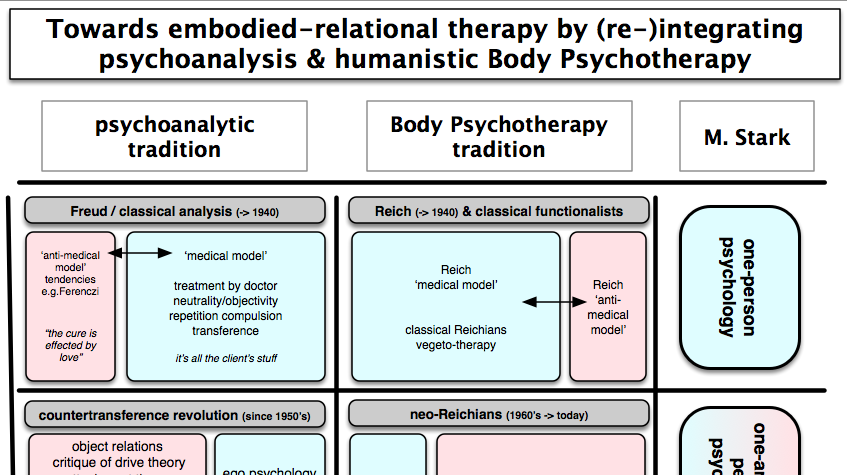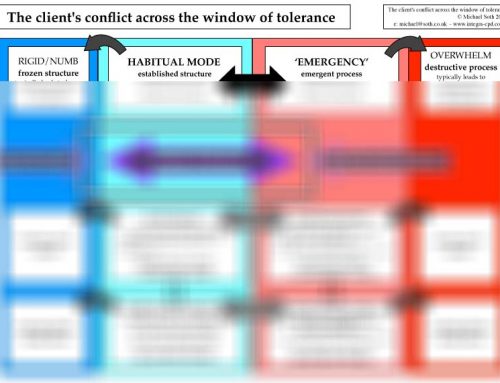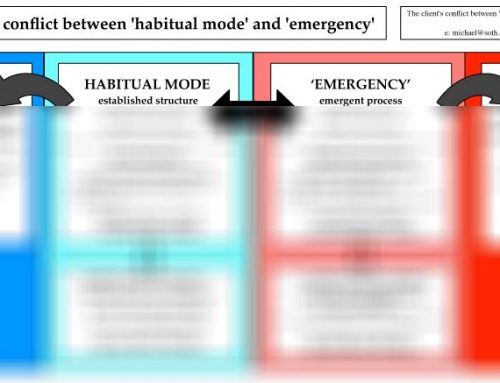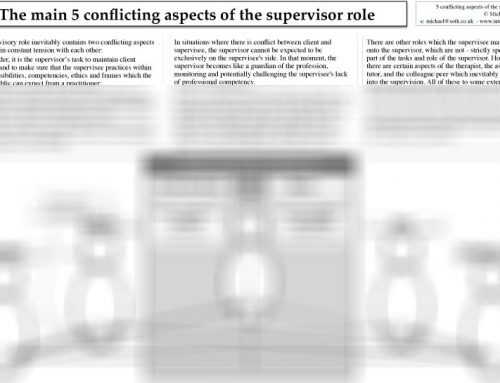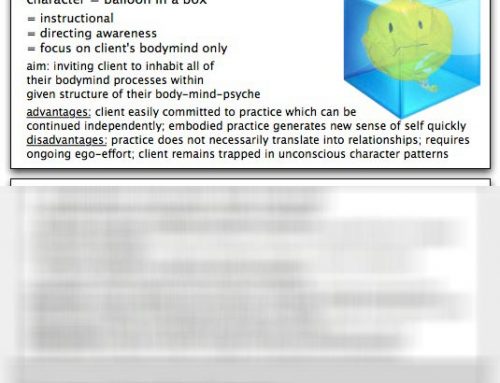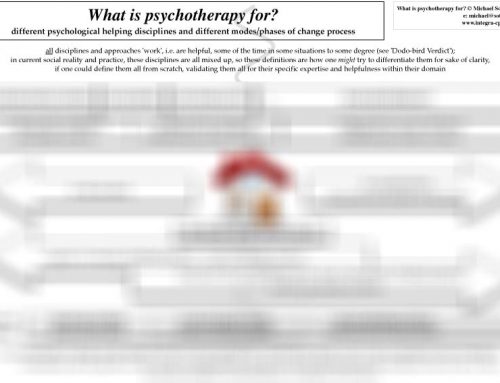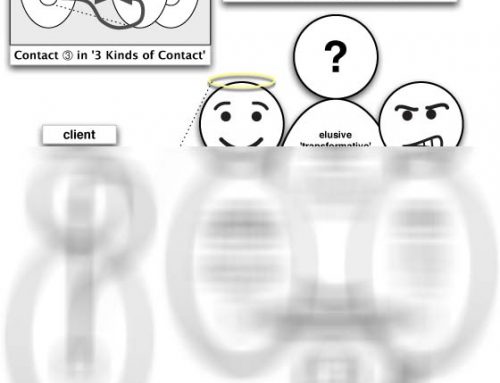Project Description
By bringing together the bodymind expertise of the body-oriented tradition and the relational expertise of both humanistic and psychoanalytic traditions, we can develop a 21st century embodied-relational way of working that views the whole client-therapist relationship as a complex bodymind intersubjective system. Rather than a meeting of minds, we are involved in an encounter between two bodyminds, both with spontaneous/involuntary and reflective/voluntary impulses and faculties, creating a dance and dialogue across the physical, emotional, imaginal and mental dimensions of experience.
The following graphic attempts to summarise the re-integration of these traditions, towards a paradoxical position which remains relationally fluid, flexible and aware of transference-countertransference entanglements.
In simple practical terms that means: I want to be aware that any body-oriented intervention can be made or received through:
1. an objectifying one-person psychology stance,
2. an attuned and regulating one-and-a-half-person psychology stance, or …
3. as a two-person psychology intersubjective response.
In my view of relationality, all three stances each have their partial and limited validity – it is the therapist’s capacity to be aware of the enactments which occur via these stances and fluidly move between this diversity of relational spaces which is conducive to providing a relational container.
This re-integration lends the powerful techniques of the body-oriented approaches the relational depth and containment which makes them interpersonally and intra-psychically transformative rather than merely utilising the body as an objectifying therapeutic tool in an effortful, goal-oriented top-down strategic fashion.
To gain access to the full resource, please log-in if you are a member already (and then re-fresh this page after log-in), or to become a member of the site register here (it's free).

